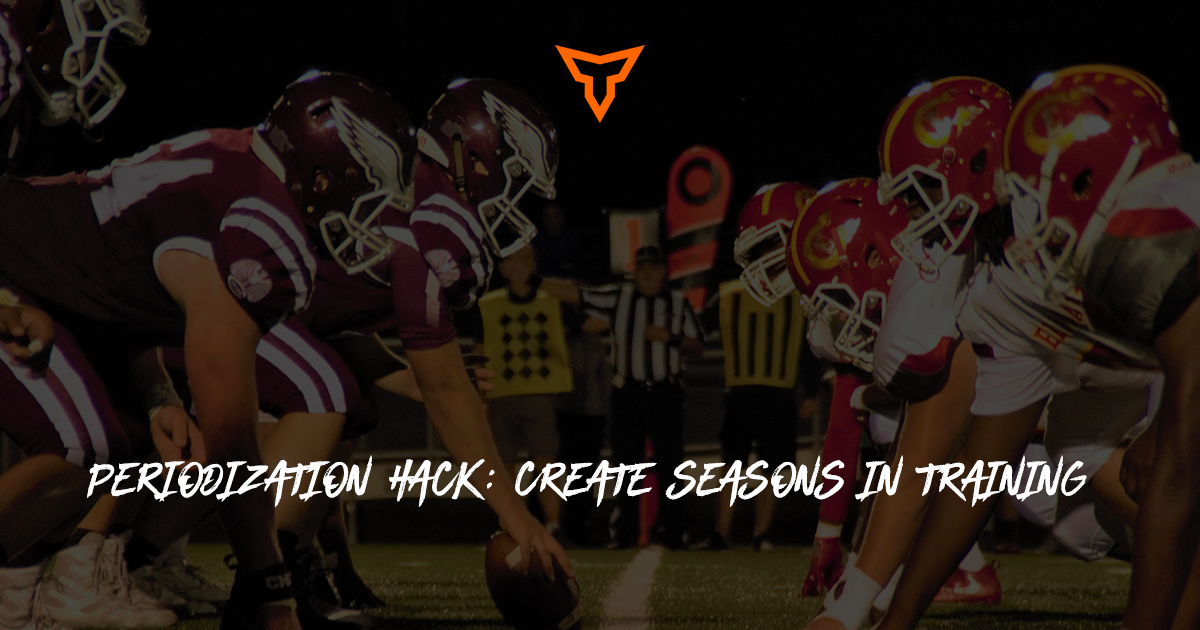EMOM Training for the Tactical Professional
Working with the tactical population has been one of the most rewarding things I have ever done in my career and has forced me to dramatically evolve in my programming approach. With no true off-season and ages/tenures ranging dramatically, the focus of programming shifted to longevity with slight improvements in specific metrics if attainable.
In a sport like football, we know that the player must be powerful, durable, and have the position specific energy system development needed to last all four quarters. On top of such, coaches are normally given a set amount of time before, during and after a season to develop their athletes. However, in the tactical setting, the warfighter must be a “jack of all trades”. There is no one training quality that rules above the others. A major obstacle that this population faces is time limitations differing each week. Without really having a specific solution, I reached out to some of my former co-workers and current staff members for help. This led me to look into “Every Minute On The Minute Training” (EMOM).
I played around with ways to modify EMOM training which lead me to write this article. I’ve used this style of training both for a whole workout, primary movement and accessory work. In this article, we will go over how to implement and pair specific adaptations with EMOM training. Please note: I understand this is not the “optimal way” of training. However, the long-term goal of any tactical strength and conditioning program is to maintain the health of the warfighter while steadily making mission specific gains.
Now, when programming, I utilize EMOM training to obtain four different adaptations/supersets/whole workouts that are listed below.
- Aerobic Base/Work Capacity
- Anaerobic Threshold Development
- Power/Strength
- Restoration
Each adaptation section will contain a work out example that I have used in the past, a breakdown explaining the logic behind the example, and certain phases of the macrocycle that can be paired with it for increased effectiveness. Please note that all of these can be performed with large groups, small groups, and individual settings of training and can serve multiple purposes.
Adaptation #1: Aerobic Base & Work Capacity Development
Training aerobic base and work capacity play a huge role in any tactical setting due to the ability to increase the rate of recovery between training sessions, in addition to the increase of quality of work being performed. Warfighters never know how long the duration of their combat and need to be able to have a high ability to stay in the fight. You will see a 25-minute variation of every minute on the minute training and total body accessory prescription. Personally, I feel one of the best ways to administer this style is to give ranges for novice to more advanced athletes.
Chart 1:
|
5 rounds |
Exercise Name |
Intensity |
Volume norms |
Ranges |
|
Minute 1: |
Sandbag Squat |
50-70 lbs |
12 reps |
10-15 reps |
|
Minute 2: |
Pull Up/Chin Up |
BW |
6 reps |
6-8, add lbs |
|
Minute 3: |
Assault Bike |
Max Effort |
10 calories |
10-14 calories |
|
Minute 4: |
C2 Rower |
8/10 resistance |
12 calories |
10-14 calories |
|
Minute 5: |
Plate Deadbug |
10 lbs plate |
12 reps |
10-15 reps |
Breakdown
Ideally, we would like the heart rate to stay between 120-150 bpm during this portion of the workout without added resistance, we want to cycle through total body exercises, but we need a focus. The pairing of two lower push, two upper pull, and one core exercises help establish a theme that can complement the primary movement/superset that would come prior. With this specific combination, the goal is to target the quads, glutes, upper back, and increase core anti-extension capabilities. Note that the resistance training in minute 1 and 2 comes first due to the fact that the athlete is under higher loads, while the cardio machines in minute 3 and 4 will increase HR and blood lactate levels.
The core stability exercise assists by allowing the HR to come down slightly and increase bracing qualities of the core before going into the next round back under load with the sandbag squats. As rounds go on, the reps and calories become harder to obtain which keeps the HR on a steady increase. Most of these will take the athlete 25-35 seconds to complete, with 25-35 seconds to rest. Traditional training of work capacity can be rather dull and monotonous so this is a way to add variation while still having a good well-constructed training session.
To keep us from pulling the body in too many different directions this accessory work is best paired with the following below:
- High Volume days
- Mobility and recovery days (scale back volume and intensity)
- Standalone work capacity days (if no primary block is done prior, increase rounds to 5-6 times through)
Adaptation #2: Anaerobic Threshold Development
Chart 2:
|
E3MOM |
Exercise Name |
Intensity |
Volume Norms |
Ranges |
|
Exercise 1 |
BB Thrusters |
65-95 lbs |
10 |
8-12 Reps |
|
Exercise 2 |
C2 Rower |
7-9/10 resistance |
12 |
10-14 Cal |
|
Exercise 3 |
Assault Bike |
N/A |
10 |
10 -14 Cal |
Note: Complete 3MOM for 2-3 sets back-to-back. Whatever time is left is the time you rest between these the E3MOMs. Rest for 3 minutes and repeat the E3MOM 2-3 rounds again at the same or lower intensity.
Breakdown: Building the anaerobic threshold is very important for the tactical operator for job duties that require higher intensities of work lasting longer durations. As a coach, I try to stay in 2:1 – 3:1 work to rest ratio. If we add up the first three sets of E3MOM, then we come out with 6 to 9 minutes of work with 3 minutes rest before repeating again. This keeps our HR and intensity high and our work to rest ratio at a 2:1 so we stay within anaerobic energy system development requirements. More tenured operators are allowed to push into higher rep/calories ranges and intensities.
Similar to the work capacity block, this style of programming is best paired with the following days for maximal efficiency:
- Strength – Endurance
- Hypertrophy-Strength Phases
- Anaerobic Energy System Development
Adaptation #3: Power/Strength Development
|
EMOM |
Exercise Name |
Intensity |
Volume norms |
Ranges |
|
Exercise 1 |
BB Bench Press |
70-80% |
2 reps |
2-4 reps |
Breakdown 1: Power is a quality that should be trained in all athletes no matter the level. Even if the athlete does not need to generate high power outputs for their specific job, it is good to have some component in for long term athletic development and to help improve strength qualities. In this EMOM example, you will see that the athlete will work up to 70% of a 1 rep max and proceed to hit 2 reps for 8-12 sets. If the reps are too easy, the athlete can add load up to 80% of a 1 rep max. For more tenured athletes, or athletes who need more volume added in, we have rep ranges spanning from 2-4 reps. The total can range from 20 total reps to 48 total reps while being time friendly. This is great for maintain volume under higher loads as well. Now this style of EMOM goes well primarily as a primary block exercise prior to doing any auxiliary work.
|
E2MOM |
Exercise Name |
Intensity |
Volume norms |
Ranges |
|
Exercise 1 |
BB Bench |
80-88% |
2 |
1-3 |
|
Exercise 2 |
MB Wall Throws |
15-30 lbs MB |
5 |
4-8 |
Breakdown 2: This second variation of EMOM training in the strength and power category is great if time is not a constraint when programming. The athlete has 2 minutes to complete all reps at the intensities above while using what time is left of the two minutes to rest and recover. Med Ball Wall throws are added in as a contrast to increase Type IIx fiber recruitment for strength and power development. These sets should take no longer than 20-25 seconds total.
These go great as a primary block as well prior to accessory work. Obviously, these reps, sets, and intensities are not set in stone. Please note that in the E2MOM the coach can add mobility work if needed instead of a plyometric or contrast set. However, these are just used as programming examples between the EMOM and E2MOM.
Adaptation #4: Restoration
|
5 rounds |
Exercise Name |
Intensity |
Volume norms |
Ranges |
|
Minute 1: |
Push Up + Rotation |
BW |
5 each |
None |
|
Minute 2: |
C2 Rower |
BW |
30 sec |
None |
|
Minute 3: |
C2 Bke |
Max Effort |
30 sec |
None |
|
Minute 4: |
Deep Squat to Stand |
N/A |
10 reps |
None |
|
Minute 5: |
90/90 + Arm Sweep |
N/A |
8 reps each |
None |
Breakdown: Whether on deployment, state side, post mission/call the restoration block is vital for the tactical athlete due to the rigorous nature of their specific duties. You will notice in minute 1: the push up plus rotation serves as a strength and stability exercise that does not fatigue the body to a high degree. In minute 2 and 3, cardiovascular exercises such as the row and bike are used to “flush” out the byproducts like metabolic waste, increasing blood flow, and bringing down the central nervous system from hard workouts or job duties. In minutes 4 and 5, one lower body and one upper body mobility exercises are utilized to restore mobility for more intense workouts to come.
Note: This style of training goes well with any phase due to athletes always needing recovery with time permitting during the training cycles.
Conclusion:
With the end goal being longevity for the war fighter, I have found and used all of the examples above. Once on the tactical side of the field, I realized a traditional macrocycle model would only get our program so far. Our personnel love to compete, have varying schedules, and need to be ready to go at all times. With that being said, there is no true off-season for us--so general physical preparation is our best friend. As a young coach, I try to open myself to new ideas, end goals, and styles of training. Obviously, some coaches may think this style of programming is more “CrossFit” based. However, I challenge those coaches to look beyond labels and rely on the principles of conditioning, strength training, and other constraints given within the tactical setting. I hope the other coaches who read this find this article useful and adaptable to their specific needs within the tactical athlete setting.
References:
Biagioli, B. (2015). Advanced Concepts of Strength and Conditioning
Bondarchuk, A. (2007). Transfer of Training in Sports
Dietz, C. Van Dyke, M. (2016). Triphasic Training Tactical Manual
Jamieson, J. (2009). Ultimate Mma conditioning. Performance Sports Inc.
Verkoshansky, Y. (2003). Supertraining
Zatsiorsky, V. Kraemer, W. (2006). Science and Practice of Strength Training
Subscribe to our blog
Subscribe to receive the latest blog posts to your inbox every week.
Related posts

Periodization Hack: Create Seasons in Training

Post-Activation Potentiation for Tactical Athletes


